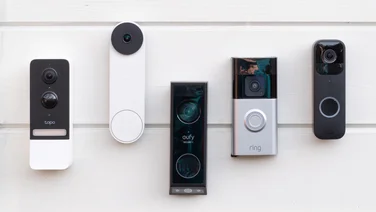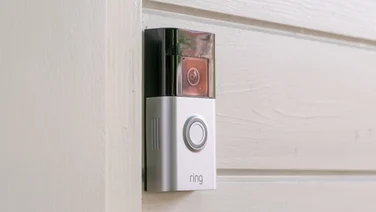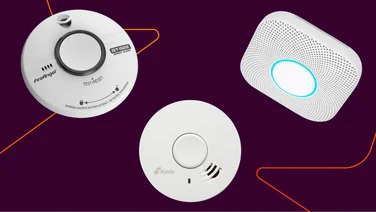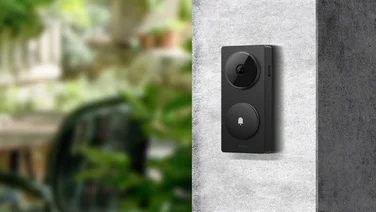To help us provide you with free impartial advice, we may earn a commission if you buy through links on our site. Learn more
- Best carbon monoxide alarm: At a glance
- How we test carbon monoxide alarms
- The best carbon monoxide alarms you can buy in 2024
- 1. Nest Protect: Best smart CO and smoke detector
- 2. Kidde 7DCOC: Best CO detector for camping and travel
- 3. X-Sense SC-08: Best combination smoke and carbon monoxide alarm
- 4. FireAngel Pro Connected FP1820-W2-R: Best interconnected home safety system
- 5. Netatmo Smart CO Alarm: Best smart and simple CO alarm
- 6. Kidde Lifesaver 5CO: Best cheap CO alarm
- How to choose the best carbon monoxide alarm for you

Everyone knows how important it is to have a smoke alarm in the house, giving you warning and time to get out should a fire break out. Yet there’s another gas that could be even more deadly. Carbon monoxide is produced when fuels don’t combust completely, usually because of a faulty gas boiler, fireplace, cooker, wood burner or blocked coal fire flue. You can’t see it, smell it or taste it, but it can and does take lives.
A carbon monoxide alarm is your best line of defence. You can buy one for under £20, mount it in your kitchen or next to your fireplace or boiler, and sleep soundly knowing you’ll get an alert should CO emissions start building up to dangerous levels.
Sadly, not every model out there is equally sensitive or reliable. Over the last few years myself and my colleagues have tested carbon monoxide alarms from a range of manufacturers, covering everything from the most basic, budget alarms to Internet connected smart alarms. Listed below, you’ll find the CO alarms we recommend. And if you want to know more about what to look for in an alarm before you make your choice, read the comprehensive buying guide that follows the reviews.
Best carbon monoxide alarm: At a glance
| Best smart CO and smoke detector | Nest Protect (~£109) | |
| Best combination smoke/CO alarm | X-Sense SC-08 (~£36) | |
| Best Wi-Fi-connected system | FireAngel Pro Connected FP1820-W2-R (~£70) | |
| Best smart CO alarm | Netatmo Smart CO alarm (~£90) | |
| Best cheap CO alarm | Kidde Lifesaver 5CO (~£17) |
How we test carbon monoxide alarms
We test carbon monoxide alarms using a specific aerosol test spray, sprayed for up to three seconds into a transparent plastic bag containing the alarm being tested. With the majority of alarms, the results are instant. If not, we don’t recommend it. Beyond this basic, functional test, we look at any controls, the display or indicators, and any additional features including Wi-Fi or connected app features. Finally, we assess any supplied fittings and instructions, to see how easy the alarm will be to fit to a wall or ceiling.
READ NEXT: Best home security cameras
The best carbon monoxide alarms you can buy in 2024
1. Nest Protect: Best smart CO and smoke detector
Price when reviewed: £109 | Check price at John Lewis

- Great for… smartphone notifications, smoke detection, informative alerts
- Not so great for… more expensive than more basic CO alarms
If you have a smartphone and can afford it, the Nest Protect is the best carbon monoxide alarm, not least because it can alert you quickly through its Android or iOS app. It’s by far the most aesthetically pleasing alarm and also the most polite when it comes to false alarms.
The Nest Protect is very easy to set up: simply remove the battery tab, launch the app, log in to your Wi-Fi, give it a name (kitchen, lounge and so on) and mount it in a suitably elevated place on a wall. I also loved its extra features, including a three-level LED lamp that can light the way in an emergency, or just when it detects you should get up in the middle of the night.
Unlike other CO detectors, the Nest notifies you (and anyone else who has registered) with a notification on your mobile device, even if you’re in another country. It also does the same for smoke. The main unit also speaks a warning in a calm English female voice when it detects smoke or CO in a room, and if the CO levels are slowly increasing, the voice will warn you before setting off the alarm. However, if CO levels become dangerously high, the centre lamp glows red and a very loud, high-pitched beep is emitted along with a spoken warning to let you know which room is affected. It’s an effective way to get your attention and let you know where the problem is, and you can temporarily cancel any alarms by holding the “Stop” button on the app or by pressing the unit’s central button.
The Nest Protect passed my CO tests with flying colours, and could even inform me of the current CO level in real-time. I can’t think of a better CO alarm on the market, especially one that doubles up as a smoke detector too.
Key specs – Lifespan: 10 years; Battery type: 6x AA; Display: None (uses smartphone app)
2. Kidde 7DCOC: Best CO detector for camping and travel
Price when reviewed: £20 | Check price at Amazon

- Great for… cheap, sensitive sensor, useful LCD screen
- Not so great for… batteries need replacing every two years
Kidde produces a wide range of carbon monoxide detectors but I like this one in particular because it has a small LCD screen that displays CO readings once they reach 10ppm upwards. The sensor takes CO readings every 15 seconds and is very sensitive indeed: it’s set to sound its 85dB alarm when carbon monoxide levels remain at 41ppm or above for 60 minutes.
The 7DCO comes with a ten-year lifespan and is BS EN 50291-2 certified for camping, caravanning and travel, or even use on a boat. As with all CO detectors, the Kidde provides end-of-life and battery warnings, along with the obligatory test/reset button for peace of mind. The only thing to watch out for is that it’s powered by a trio of AA batteries which need replacing roughly every two years. I had no issues whatsoever during tests, but it means this alarm won’t be compliant with the new Scottish regulations.
Key specs – Lifespan: 10 years; Battery type: 3x AA; Display: LCD
3. X-Sense SC-08: Best combination smoke and carbon monoxide alarm
Price when reviewed: £36 | Check price at Amazon

- Great for… 2-in-1 convenience, fast detection, loud alarm
- Not so great for… more expensive than stand-alone alarms
While it isn’t the cheapest CO detector, the SC-08 earns its keep by providing smoke and carbon monoxide alarms from within the one unit. It combines a photoelectric smoke sensor with an electrochemical CO sensor, then whacks you with a painfully loud 85dB siren if either catches anything above safe levels. Having heard it, I can confirm that you’re unlikely to sleep through it. Beyond that, it also features a 3cm LCD panel, which displays a real-time measurement if CO levels get beyond 30 parts per million, along with the battery level.
In tests, I found the SC-08 quick to respond to the CO test spray and sound the alarm. The battery is non-replaceable and promises 10 years of continuous protection, which should cover you for the useful lifespan of the sensor. If you’re looking for a simple, all-in-one safeguard for a room with a gas fire, stove, fireplace or boiler, the SC-08 is as effective and easy as they come.
Key specs – Lifespan: 10 years; Battery type: Lithium (sealed in); Display: 3cm LCD
4. FireAngel Pro Connected FP1820-W2-R: Best interconnected home safety system
Price when reviewed: £70 (CO detector only) | Check price at Robert Dyas

- Great for… loud alarms across the whole house, clear smartphone alerts
- Not so great for… challenging setup process
This carbon monoxide alarm forms part of FireAngel’s Pro Connected Range of smoke, CO and heat detectors, all of which interconnect via FireAngel’s dedicated Wi-Safe2 mesh network system. The idea is that if one unit detects a problem, whether CO, smoke or heat, all the other installed units will sound their 85dB alarms at the same time. This means that no matter where you are in the home, there should always be at least one alarm within earshot. The alarm will also send notifications to the iOS/Android app, telling the user which unit’s sensor has been activated. The system can accept up to 50 devices on a single Wi-Fi circuit.
All Pro Connected products can be bought separately and will then work as a standalone detector. I received a package of all three (CO, heat and smoke) each fitted with a sealed-for-life lithium battery.
While I found them fiddly to set up using the supplied Ethernet-connected wireless gateway box, they did all sound their alarms when tested, so the system works exactly as FireAngel claims.
FireAngel is a major player in the field of CO, fire and smoke detection and its system is a clever, cost-effective way to protect the entire household in one fell swoop.
Key specs – Lifespan: 10 years; Battery type: Built-in lithium; Display: On app
5. Netatmo Smart CO Alarm: Best smart and simple CO alarm
Price when reviewed: £90 | Check price at Amazon

- Great for… easy setup, helpful smartphone alerts, loud alarm
- Not so great for… expensive for a stand-alone alarm
Netatmo’s Smart CO alarm is surprisingly easy to set up. The alarm turns on when you push and twist it onto the supplied wall mount. From there on all you need to do is install Netatmo’s Security app, pick your Wi-Fi network and enter the password, then tell the app which room it’s in. There’s no complex hub involved, and the system also covers the brand’s smoke alarms and security cameras, with all reporting to the same app.
I found this alarm sensitive and reliable: it set off within seconds during testing, and took a good three minutes of airing and fanning before we could get it to turn off again. Plus, at 85dB, it’s loud enough that you won’t miss it. In the event you’re wearing headphones or hiding in a soundproof room, big, bold red alerts from the app should get your attention, and the app will even give you advice on what to do. There’s a certain sense of security in being able to check through the app that the alarm is online and working, and you can also see the current CO level. As a fit-and-forget smart alarm, the Netatmo takes some beating.
Key specs – Lifespan: 10 years; Battery type: Built-in lithium; Display: On app
6. Kidde Lifesaver 5CO: Best cheap CO alarm
Price when reviewed: £17 | Check price at Amazon

- Great for… compact, cheap, loud alarm
- Not so great for… batteries need replacement every three years
Replacing the old Lifesaver 5CO, this wallet-friendly Kidde alarm now has an upgraded ten-year lifespan. Its sensor is set to sound the alarm after 60-90 minutes of exposure to 50ppm of CO or above, at which point you can expect a rude awakening from its 85dB siren. It’s not quite as sensitive as the 7DCO above, but in tests it was only a couple of seconds behind in raising the alarm. And while there’s no screen or anything fancy, we found it simple and easy to use, with clear red/green LED indicators and a very noisy warning when its batteries fail or the sensor reaches end of life.
The one downside with this model is that it runs off a pair of AA batteries, which need to be switched out roughly every three years, which means three changes during its lifespan – and if your luck is as good as mine the battery alert will always go off in the middle of the night. This isn’t a huge issue, but it means this model isn’t suitable for use in Scottish homes. It is, however, suitable for use in a boat or caravan, making it a good option if you need an alarm on your next boating or caravanning trip.
Key specs – Lifespan: 10 years; Battery type: 3x AA; Display: None
How to choose the best carbon monoxide alarm for you
What is carbon monoxide poisoning?
Carbon monoxide is known as the silent killer because you can’t smell it, taste it or see it. Once it enters your bloodstream, it invades the red blood cells (haemoglobin), preventing them from carrying oxygen around the body. Symptoms of carbon monoxide poisoning include a flu-like headache, dizziness and nausea followed by tiredness, confusion, breathlessness, weakness, loss of muscular coordination and – dare I mention it – death. CO is so odourless that even dogs can’t detect it.
How do CO alarms work?
The health effects of CO depend on the concentration and length of exposure (carbon monoxide concentration is measured in parts per million). According to respected CO alarm manufacturer Kidde, “a carbon monoxide detector is a time-weighted alarm that measures the buildup of carbon monoxide in a house.
“For a person to begin feeling the effects of carbon monoxide poisoning, they would need to be exposed to a carbon monoxide level of 50 parts per million (ppm) for eight hours. An alarm’s response time will vary depending on the level of carbon monoxide in the air. For example, an alarm will sound after three and a half hours of continuous exposure at a level of 50ppm, yet will sound after eight minutes of continuous exposure at a level of 400ppm.”
Carbon monoxide sensors have a finite lifespan of between five and seven years, though these days, a few manufacturers claim that their sensors will last a full ten years. Generally speaking, it’s worth playing it safe and replacing your alarm a year or two before its life is supposed to run out. Tests in the US have shown that alarms over eight years old can fail to detect CO at levels of above 400ppm.
It’s also worth noting that the test button on these devices doesn’t actually test the sensor – it only makes sure that the circuit’s working.
READ NEXT: Best wireless alarm systems to buy
What levels of CO are considered dangerous?
Most people will not experience any symptoms from prolonged exposure to CO levels of under, say, 40ppm. It depends on the length of exposure, but the real danger level starts at around 400ppm (two to three hours of exposure at this level can be life-threatening). To give you some idea of how dangerous higher levels of concentration can be, 1,500ppm could result in death within an hour and 6,000ppm within 15 minutes.
All of these concentrations are bad enough when you’re awake and realise that something isn’t quite right – especially if others are feeling a similar effect – but if you’re asleep, you may wake up with a severe headache and nausea and be incapable of even crawling for fresh air. Worse, you might not even wake up at all.
Why should I be concerned?
According to the NHS, 25 people die every year in the UK from accidental CO poisoning. For extra peace of mind, you’re advised to have your boiler, gas fire or wood/coal fire’s flue checked at regular intervals. And never use a gas-powered lamp or cooker inside a tent.
Where should I install my CO alarm?
Most manufacturers suggest locating your alarm next to or near a gas appliance, and it’s worth having one in the same room as any fire or wood-burning stove. It should be around 1.5m from the ground and at least 30cm away from any ceiling, and most can be mounted on a worktop, shelf or table – or simply mounted on the wall.
Don’t think that CO alarms are just for your home, either. They’re essential for caravans and motorhomes, and you might even want to take one on holiday if you’re staying in a cottage or self-catering accommodation.
Are there any features worth looking out for?
Generally speaking, CO alarms are pretty basic devices. Only the new and more expensive smart or app-connected alarms have any real features to speak of. The most important thing to look for is British Standards certification. CO alarms should be kitemarked to EN50291-1:2018 for use in domestic premises, and BS EN 50291-2:2010 for use in the home or a boat or caravan. The second standard mostly ensures that the alarm is tough enough for use on the move.Otherwise, the key features come down to whether there’s a display and how the alarm is powered. A growing number of CO alarms now have a display which gives you the sensor’s current reading on CO particulates in the air, though – to save batteries – you will only see this after a test or if the reading goes above safe levels.
Until recently most CO alarms ran from a set of removable AA or AAA batteries, which may need to be replaced every three to five years. However, many now use a sealed-in Lithium battery designed to last for the same lifespan as the sensor; you buy the unit and just replace it when the lifespan’s up. This is arguably safer, and recent Scottish laws require that homeowners and landlords either fit tamper-proof alarms with a long-life Lithium battery or a mains-wired CO alarm if there’s a carbon-fuelled appliance – such as a boiler, woodburner or open fire – on the property.










